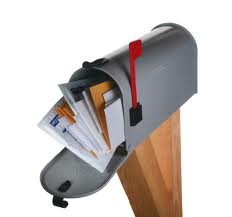 Let me start off on a positive note by saying Happy Thanksgiving. I am thankful to those of you who subscribe to this blog as well as those who participate in the discussions using the comment box. The last few years have been lean years for the non-profit sector, and I know many of you are thankful for donors, board members, staff, clients, and volunteers. We should all give thanks today as we sit down to enjoy a nice plate of turkey.
Let me start off on a positive note by saying Happy Thanksgiving. I am thankful to those of you who subscribe to this blog as well as those who participate in the discussions using the comment box. The last few years have been lean years for the non-profit sector, and I know many of you are thankful for donors, board members, staff, clients, and volunteers. We should all give thanks today as we sit down to enjoy a nice plate of turkey.
Over the last few days, I have been bombarded with stewardship emails, eBlasts, snail-mail, social media posts, text messages, and thank-a-thon calls from various charities and non-profit friends.
If you go back and look at my blog archive, you can see that I am a HUGE fan of these kind of activities. However, I can’t seem to get this one simple thought out of my head this year:
Are we just going through the motions?
Are we conveying heartfelt thanks this way?
I honestly don’t know the answer to these questions. As more and more non-profits engage in these types of stewardship activities, I wonder if they lose their impact and luster? I used to love getting a thank-a-thon call from a charity I support. Now those thank-a-thon messages line up one after another on my voicemail like planes at O’Hare airport.
If board members, staff and donors are part of our “extended non-profit family,” then maybe the test for our stewardship activities should be this simple question: “Is this how I would engage a member of my family?”
For example, would you send you Mom & Dad a Thanksgiving card and be done with it? Maybe some of you would, but I’m guessing many wouldn’t.
A long time ago in a galaxy far, far away, I used to cook a Thanksgiving dinner for the Boys Scout district for whom I served as their scouting professional. That seemed to feel right to me because it is what I planned on doing with my biological family.
I understand that non-profit organizations cannot host a number of different dinners to give thanks with all of their stakeholder groups. I guess that I am suggesting we need to all be vigilant and mindful that giving thanks should never become a rote activity.
My Thanksgiving recommendations for your consideration are:
- Keep doing what you’re doing
- Evaluate & critique your efforts afterward
- Engage a small group of donors in a post-Thanksgiving Day discussion about what should change with next year’s efforts
- Pick-up the phone and call each of your board members and personally say thank you to them one-on-one (no voicemail and no group speech in the board room)
- Start thinking about who you might invite to your non-profit family Thanksgiving dinner next year. Host it the week before Thanksgiving 2013. See how it goes and how it feels. You may just like it.
Happy Thanksgiving everyone. Remember that this day can be more than just being thankful. It can be about showing people you’re thankful.
Here’s to your health!
Erik Anderson
Founder & President, The Healthy Non-Profit LLC
www.thehealthynonprofit.com
erik@thehealthynonprofit.com
http://twitter.com/#!/eanderson847
http://www.facebook.com/eanderson847
http://www.linkedin.com/in/erikanderson847


















